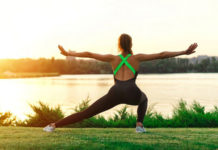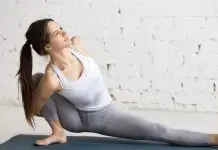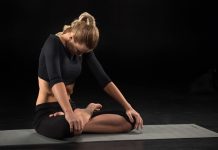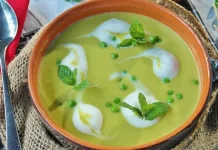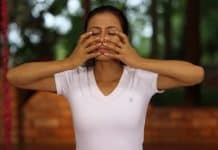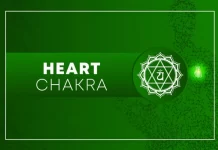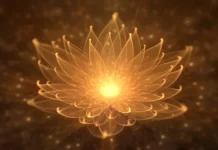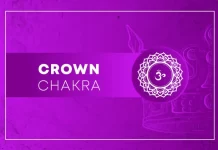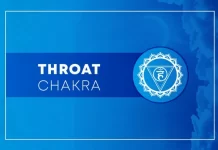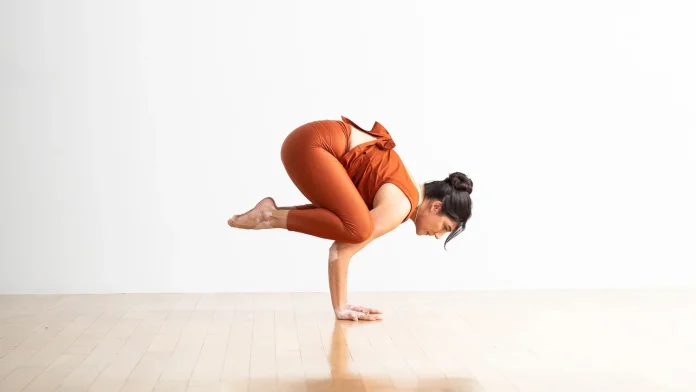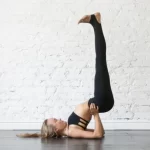A compact arm balance, Crow Pose, and Crane Pose tone the abs and the arms, strengthen the core, and focus the mind.
Balance Yoga Poses. Embarking on the journey of mastering arm balances can be a humbling experience for many of us, testing both our physical abilities and our ego. Two of the initial arm balances that often mark a yogi’s progress are Bakasana (Crane Pose) and Kakasana (Crow Pose).
Initially, achieving these poses may seem like an insurmountable challenge, but with practice, they become attainable. These poses provide an opportunity to cultivate strength and flexibility simultaneously, inspiring practitioners to seek new challenges in their yoga practice.
Crane Pose and Crow Pose, although technically distinct, are often practiced as variations of each other. In Crow Pose, known as Kakasana, you balance with bent arms and your knees resting on the upper arms. In Crane Pose or Bakasana, your arms remain straight while your knees are drawn in closer to your underarms. Feel free to experiment with the variations that suit your body best.
To enter either of these poses, you must activate your core muscles, press firmly into your hands, engage your shoulder blades, and keep your legs huddled together along the midline. Above all, trust in your ability. Bakasana, in particular, teaches you to establish connections between your arms and knees, your abdominal muscles and spine, and ultimately, your mind and body.
The rewards? Strengthened abdominals, arms, and wrists, along with a delightful stretch in your upper back and inner groin. Yet, perhaps the most valuable reward of all is the confidence that emerges from confronting your apprehensions and successfully maintaining your composure while simultaneously releasing any doubts.
Sanskrit
Kakasana (kahk-AHS-ah-nah); Bakasana (bahk-AHS-ah-nah)
baka = crane
kaka = crow
Crow Pose and Crane Pose basics
Pose type: Arm Balance
Target area: Upper body
Benefits
Crow Pose and Crane Pose enhance concentration while offering a stretching effect on your glutes, quadriceps, and wrist flexors. These poses also contribute to the strengthening of multiple muscle groups, including the core, upper back, chest, hip flexors, hamstrings, arms, shoulders, forearms, and wrist extensors.
How to
- Start in a squat position with your knees positioned apart. Your feet can be together or spaced apart.
- Place your hands on the ground approximately 6 to 8 inches in front of your feet, maintaining shoulder-width distance between them. If your shoulders feel tight, you can widen your hand placement slightly.
- Rise onto the balls of your feet and lift your hips upward. Bring your knees closer toward your upper arms.
- Tilt your upper body forward, ensuring that your shoulders fit snugly between your knees.
- Press your knees firmly against your upper arms. You can either balance them on your triceps for Crow Pose or tuck them nearer to your armpits for Crane Pose.
- Continue shifting your chest forward until your elbows align directly over your wrists, and you sense a shift in your center of gravity.
- Lift your heels toward your buttocks. Your knees can either grip the outer shoulders or rest on your triceps.
- For Crane Pose, extend your arms as straight as possible while drawing your feet and buttocks closer together.
- Maintain this pose for 5 to 10 breaths before gently releasing your feet back to the floor.
Beginner arm balance
- Prior to attempting these poses, make sure to warm up your wrists to avoid strain.
- Beginners often make the mistake of lifting their buttocks far away from their heels. Instead, focus on maintaining a compact posture with your heels and buttocks close together.
- When you’re ready to lift your feet off the floor, use your upper arms to press against your shins and draw your inner groin toward your pelvis. This action will assist you in achieving the lift.
- While it might seem like Crow and Crane poses heavily rely on arm strength, the majority of the effort comes from your abdominal muscles. As your core strength improves, you’ll be able to reduce the weight resting on the backs of your arms.
- Avoid rushing into the pose or attempting to abruptly find balance. Move slowly and mindfully, seeking stability at each stage of the transition.
- Maintain stability and strength by pressing your arms into your knees and knees into your arms.
- If your elbows start to splay outward or your shoulders dip, practice transitioning from Plank to Chaturanga Dandasana (Four-Limbed Staff Pose) to keep your elbows in and shoulders away from your ears. This will enhance upper body strength and prepare you for Crane or Crow.
- Overcoming the fear of falling can be a significant challenge when learning Crane or Crow poses. Placing a folded blanket, bolster, or cushion on the ground under your head as a cushioning support can provide added confidence during your practice.
Modifications and props
Preparing for Crow Pose or Crane Pose on the floor can be facilitated by starting in a squat position on a block, elevating your feet a few inches above the ground.
Deepen the poses
To alleviate potential wrist discomfort during the full poses, consider curling your fingers slightly instead of splaying them on the floor. This adjustment can help reduce the pressure on your wrists.
Establish a solid connection between your arms and legs by actively pressing your knees or shins into your arms and reciprocally, your arms into your knees. Ensure that your elbows remain close to your body; if your elbows protrude outward, you may encounter greater difficulty in achieving the pose.
Be mindful!
- You suffer from vertigo, dizziness, or certain eye conditions.
- You have a history of wrist arthritis, wrist pain, or carpal tunnel issues.
- You experience any form of back pain or have a history of back injuries, including surgeries, osteoporosis, disc bulging or herniation, or arthritis.
- You’ve undergone hip replacement surgery or encountered hip discomfort during this pose.
Variations
Bakasana and Kakasana, given their close resemblance, provide ample room for personalization, allowing you to discover “your” pose. You can explore slight variations in elbow bending and experiment with different knee positions to identify what suits your unique body. Additionally, props can be utilized to provide support as you work towards lifting into the pose.
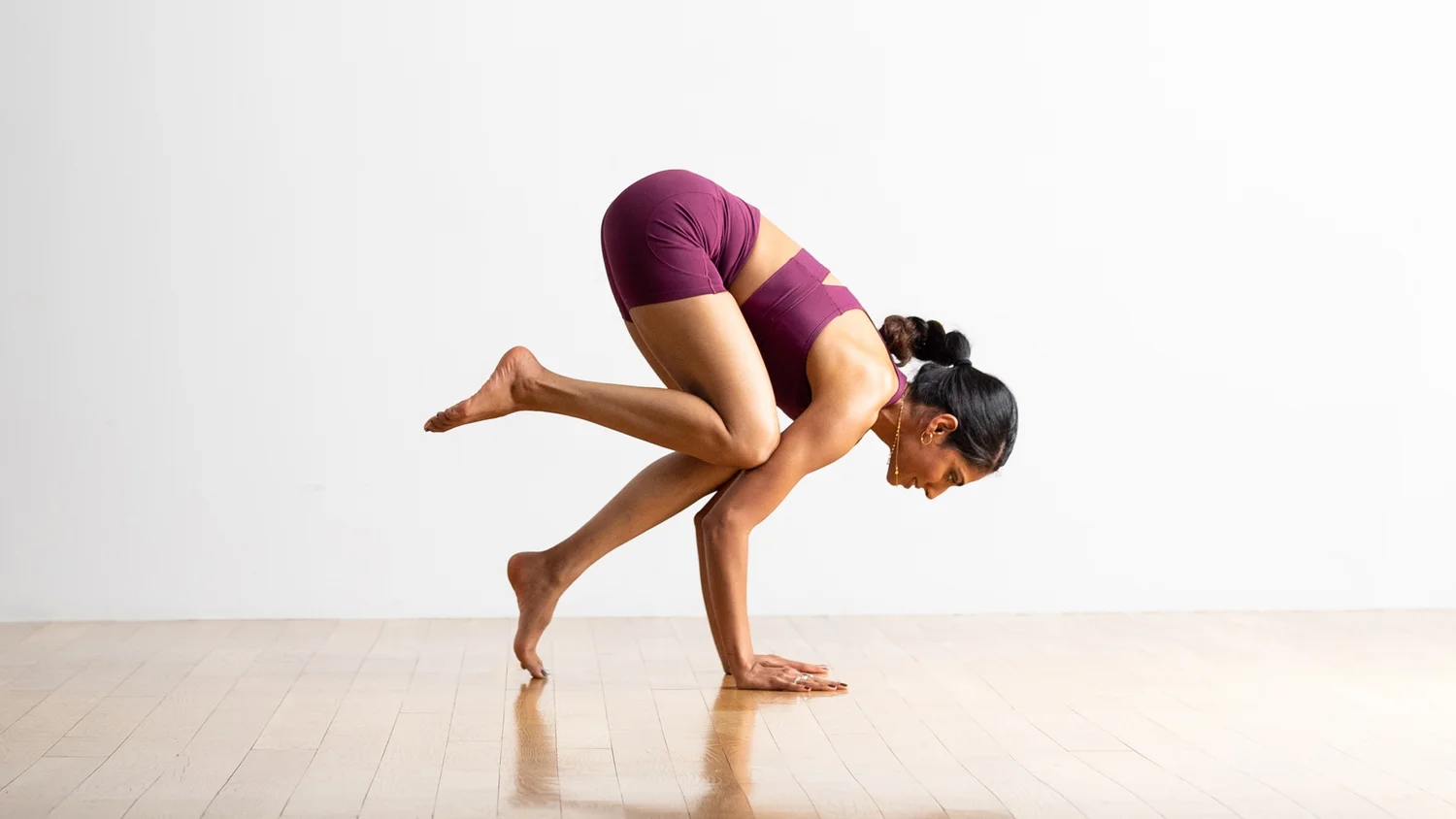
Crow Pose prep
Apply pressure by pressing your arms into your knees and knees into your arms to establish a foundation of strength and stability. As you shift your body forward, rise onto the tips of your toes. Engage your abdominal muscles as you raise one leg, then lower it and lift the other leg. Gradually progress towards the goal of lifting both feet simultaneously.
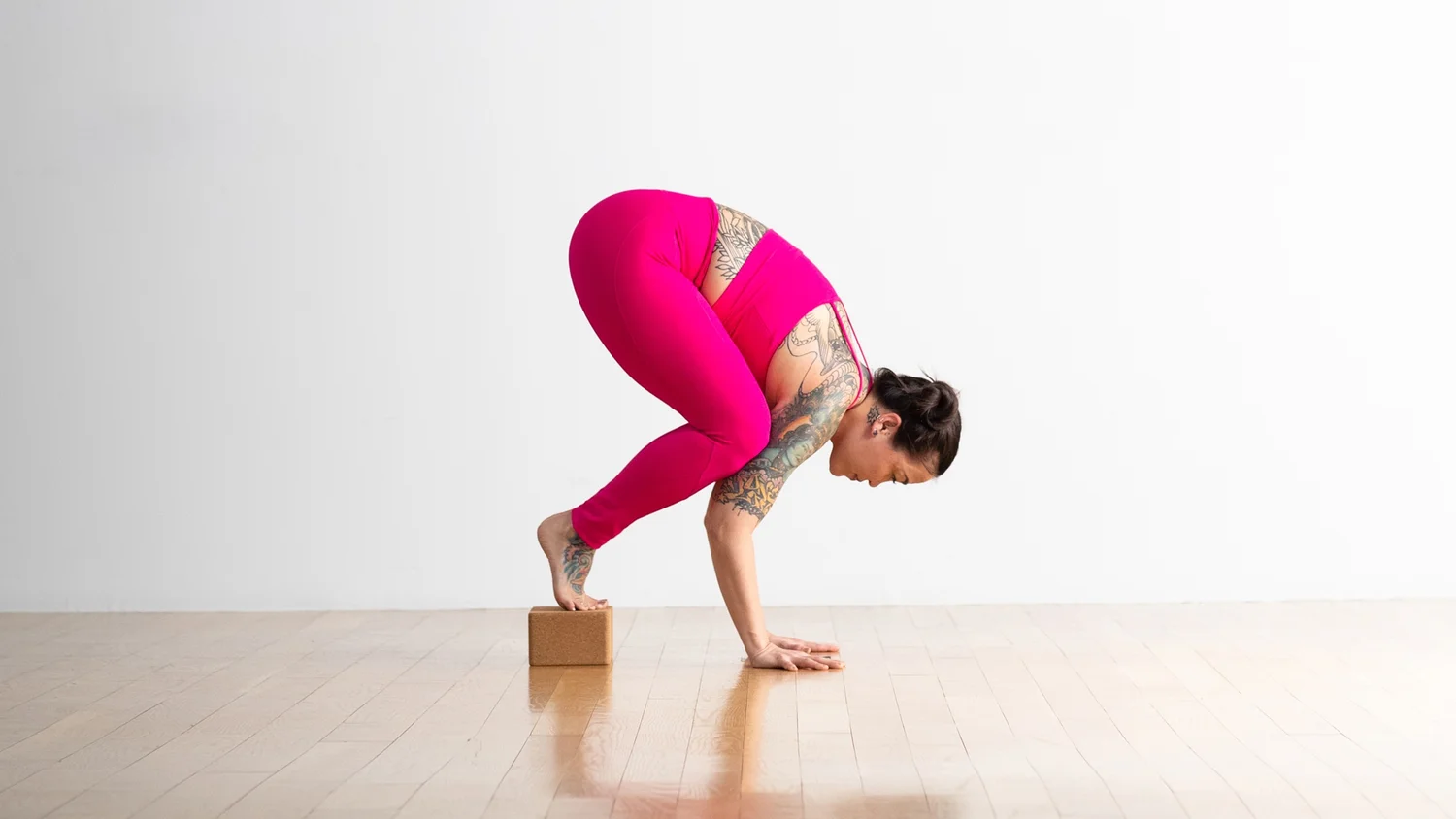
Crow Pose with a block
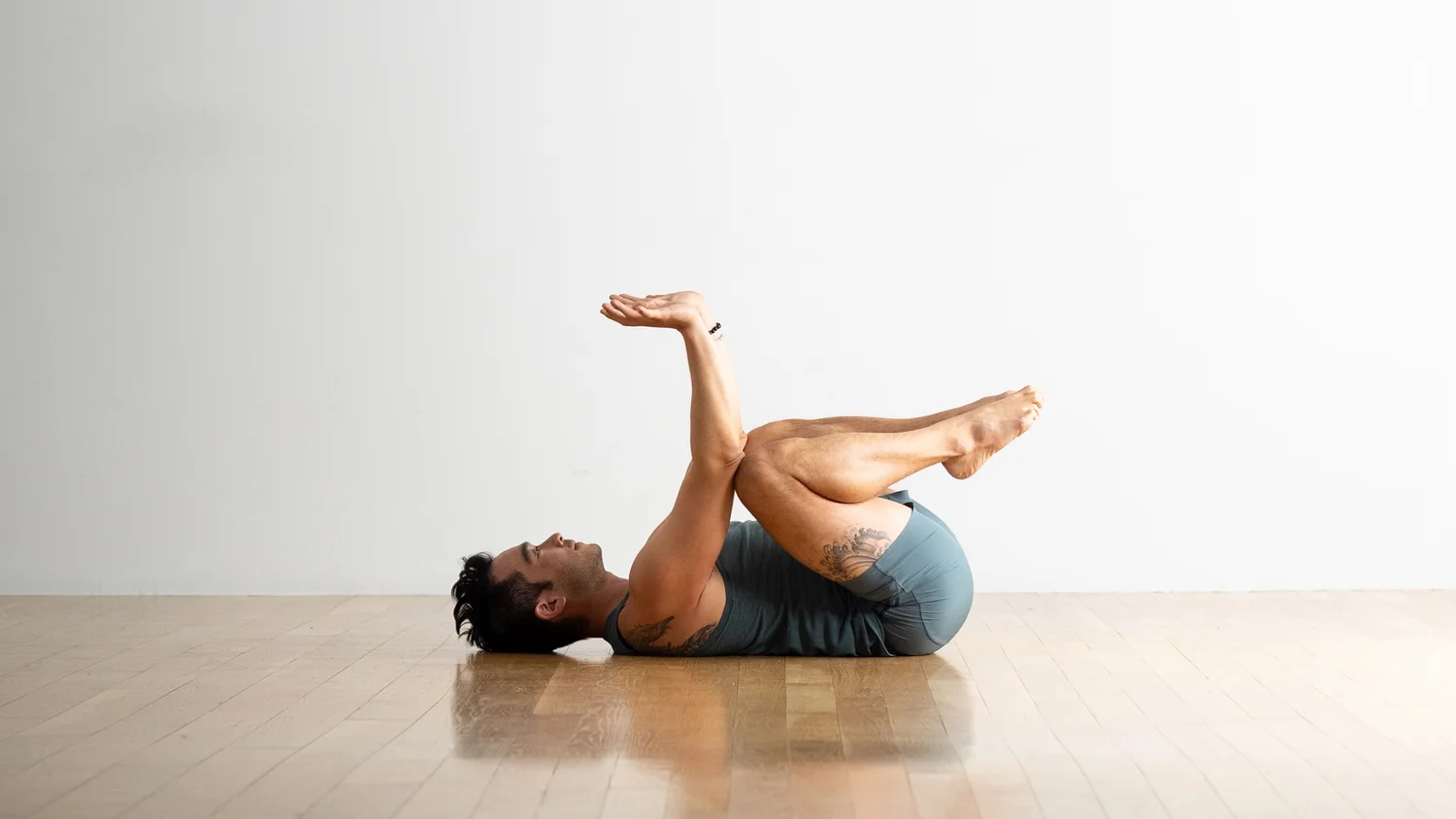
Consider using a block beneath your feet as a helpful aid. This will allow you to position your shins higher on your upper arms, even if your hip flexibility is limited, ultimately enhancing your chances of successfully entering the pose. Activate your abdominal muscles as you elevate one leg, then lower it before lifting the other leg. Progress towards the objective of lifting both feet simultaneously.
Reclining Crow Pose
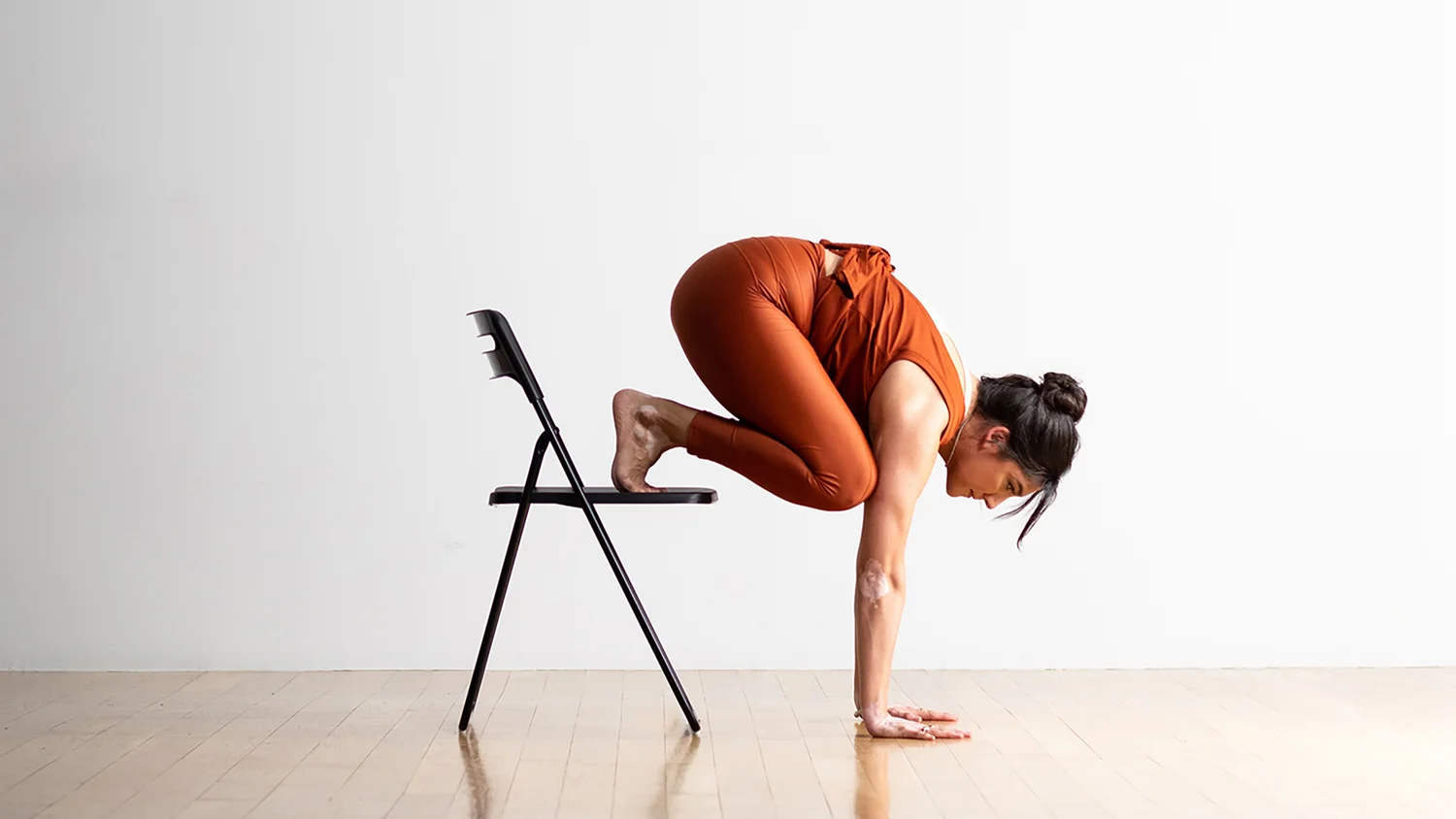
To acquaint yourself with the sensation of this pose without the need for weight balance, attempt to enter Crane or Crow while lying on your back. Position your shins on the outside of your upper arms and create resistance by pressing your shins and arms against each other. During this practice, you have the option to keep your head resting on the ground or raise it for a few breaths. Your elbows can remain bent or be fully extended.
Crow poses with a chair
While you focus on extending your arms, experiment with placing your feet on a chair’s seat and positioning your hands on the ground beneath your shoulders. By drawing your knees close to your upper arms, you can begin to grasp the necessary form without the need to maintain balance or carry your entire body weight.
Why we love this pose
“Crow was the first challenging pose I ever attempted, and it remains my go-to pose when I seek strength, stability, and confidence. Over the years, I used to refer to step-by-step guides constantly to ensure I was practicing it correctly, particularly concerning knee placement. That’s why it continues to be a fundamental part of my practice. Every time I approach it, there’s always something new to refine, regardless of how many times I’ve done it.”
Preparatory and Counter Poses
Preparatory poses
Chaturanga Dandasana (Four-Limbed Staff Pose)
Adho Mukha Svanasana (Downward-Facing Dog Pose)
Baddha Konasana (Reclining Bound Angle Pose)
Prasarita Padottanasana (Wide-Angled Standing Forward Bend)
Counter poses
Purvottanasana (Reverse or Upward Plank)
Urdhva Mukha Svanasana (Upward-Facing Dog Pose)
Anatomy

Alignment holds equal importance alongside strength when it comes to mastering these arm balances, as emphasized by Ray Long, MD, a board-certified orthopedic surgeon and yoga instructor. Bakasana and Kakasana serve as connections between the upper and lower extremities, notably at the juncture of the inner thighs and upper arms.
The inner thigh adductors actively engage by gripping the upper arms, while the arms play a crucial role in directing the center of gravity downward onto the mat. Simultaneously, the abdominals come into play, facilitating trunk flexion and upward lift. To complete the posture, flex the hips, draw the feet upward, and evert the ankles (turn them outward) to expose the soles of the feet.
In the accompanying illustrations, muscles are color-coded: pink denotes muscles undergoing stretching, and blue represents muscles contracting. The intensity of the color reflects the degree of stretch and contraction, with darker shades indicating greater strength.
Alignment is just as vital as strength when it comes to mastering arm balances, as highlighted by Ray Long, MD, a certified orthopedic surgeon and yoga instructor. In poses like Bakasana and Kakasana, a crucial connection forms between the upper and lower extremities, particularly where the inner thighs meet the upper arms.
The inner thigh adductor muscles actively participate by firmly gripping the upper arms, while the arms themselves play a pivotal role in guiding the center of gravity downward onto the yoga mat. Concurrently, the engagement of the abdominal muscles facilitates trunk flexion and upward lift. To complete the posture, flex the hips, draw the feet upward, and rotate the ankles outward (evert them) to expose the soles of the feet.


Accompanying illustrations depict muscles in distinct colors: pink signifies muscles in a stretching phase, whereas blue represents muscles undergoing contraction. The intensity of the color shading corresponds to the level of stretch or contraction, with darker hues indicating greater muscle engagement.
Bring the feet together. Dorsiflex and evert the ankles. This uses the tibialis anterior peroneus longus and brevis.
Put Crow and Crane Pose into practice
- 9 Yoga Poses to Build Arm Strength
- 5 Yoga Poses that Build Strength and Flexibility
- 5 Cool Ways to Use Props for Arm Balances
Balance Yoga Poses: are popular questions
What is the difference between the Crow and crane pose?
In crow, your arms are bent, while in crane your arms are straight. Both poses require flexibility and balance, but the crane pose requires a lot more upper-body strength. It’s considered the more advanced of the two, so practice crow before you try on the crane!
How do you balance Kakasana?
Holding the squeeze, lift the pelvis slightly, pitching the head and torso forward and becoming even lighter on your feet. Press down through the palms of the hands. Focus on a point on the floor in front of your hands. There is little or no weight on the feet now—you are balancing on your toes.
Crow Pose fosters inner focus and concentration in the present. This pose is a symbol of justice and longevity. It strengthens the sacral chakra, also known as the second chakra.
Why is crow pose so difficult?
Most students fail to perform Crow in yoga because the forearms are not vertical. This means that the line of gravity is not going straight down into the ground. Besides, there is too much weight on your feet. From this position, it’s impossible to lift yourself up into Bakasana without having to jump.
How do you not fall forward in the Crow pose?
Once you’ve done the forehead exercise, practice crow with a pillow, bolster, or rolled-up blanket on the floor in front of your forehead: This will put your mind at ease knowing that if you fall forward, something soft will catch you.
Is Crow a difficult yoga pose?
Crow Pose (Kakasana) is an advanced yoga pose. It’s a tricky asana that involves a heck-ton of balance. But once you get to grips with Crow Pose, you’ll be well on your way to bird-yoga nirvana.
Where should your knees be in Crow Pose?
Place your knees on the back of your upper arms as high up as you can, or squeeze the outer upper arms with your knees. Hug the knees and elbows into your mid-line, exhale, and round strongly through the upper back drawing your side waist up, using your abdominals.
What is the longest time to hold Crow Pose?
Aditya, hailing from Uttar Pradesh, India, achieved a remarkable feat by holding the Bakasana (Crow yoga pose) for an impressive duration. At the age of 13 years, 5 months, and 24 days, he maintained the Bakasana pose for 6 minutes, 44 seconds, and 90 milliseconds. This achievement was officially confirmed on November 17, 2021.
Conclusion
In conclusion, balance yoga poses offer not only physical challenges but also mental rewards. They test our strength, flexibility, and concentration while teaching us patience and self-awareness. Whether you’re a beginner exploring foundational poses like Tree Pose or an advanced practitioner mastering intricate arm balances, the journey toward balance is a transformative one.
These poses remind us that finding stability amid life’s fluctuations is an essential part of our practice, both on and off the mat. So, embrace the wobbling, the falls, and the triumphs, for they are all part of the beautiful and ever-evolving path of balance in yoga.

